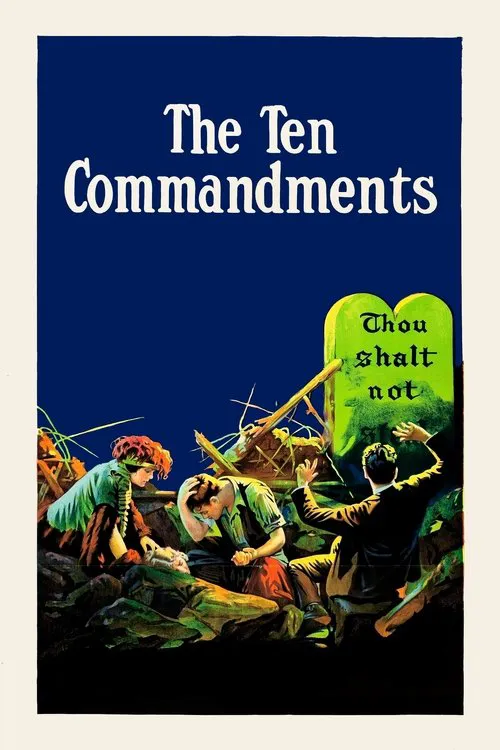The Ten Commandments

Plot
The Ten Commandments is a 1956 epic film directed by Cecil B. DeMille, which retells the familiar story of Moses and combines it with a modern tale of brotherly conflict. The movie is a sweeping epic that brings together biblical grandeur and intimate human drama, weaving together two distinct narratives that explore the themes of faith, love, and the enduring power of the Ten Commandments. The film's first part tells the story of Moses, a Hebrew born to an Egyptian princess, who is adopted by Pharaoh Ramses II. As a member of the Egyptian royal family, Moses enjoys every privilege, but his true heritage and identity remain a secret. However, when he witnesses an Egyptian brutally beating a Hebrew slave, Moses intervenes and kills the Egyptian in a moment of passionate justice. The consequence of his actions is a death sentence, and Moses flees Egypt, eventually finding refuge in the land of Midian. There, he meets a beautiful woman named Zipporah, who becomes his wife, and learns about his Hebrew heritage from the prophet Jethro. Years pass, and Moses becomes a successful shepherd, but the call of God eventually comes to him, commanding him to return to Egypt to demand that Pharaoh release the Hebrews from bondage. Moses returns, using his position as a royal advisor to negotiate the release of the Hebrews, but Pharaoh refuses to listen. This sets in motion a series of devastating plagues that afflict Egypt, culminating in the final and fatal plague, in which the firstborn sons of every Egyptian family die. As the Hebrews prepare to leave Egypt, Moses is instructed by God to lead them to Mount Sinai, where he will receive the Ten Commandments. This moment is portrayed as a transcendent experience, with divine light illuminating the mountain and Moses descending with the tablets, which contain the fundamental laws for the Hebrew people. The second part of the film takes place in modern San Francisco and introduces a new set of characters. John and Dan, two brothers, are rivals for the love of Mary Austin, a beautiful young woman. As they struggle for her affections, their long-standing feud over business matters comes to a head when Dan uses shoddy materials to construct a cathedral. John discovers his brother's deceit and feels betrayed, which leads to a bitter confrontation. Through this modern story, the film illustrates the enduring relevance and importance of the Ten Commandments. The brothers embody the principles of honesty and integrity, two of the commandments, as they navigate their relationships with each other and with Mary. While the tale of Moses and the Hebrews is set in ancient times, the story of John and Dan shows that the same fundamental principles of faith, love, and obedience apply today. The film's use of a dual narrative structure allows DeMille to juxtapose the grand sweep of biblical history with the intimate, human drama of the modern story. The two parts of the film are connected by a shared concern with the power of faith and the importance of living a life guided by universal principles. As the story of John and Dan unfolds, it becomes clear that Dan's actions have consequences that echo the plagues visited upon the Egyptians in the story of Moses. Just as God brought punishment upon Egypt for its refusal to obey, Dan's use of false materials leads to disaster, and he is ultimately punished for his transgressions. Through this parallel, the film highlights the consequences of living a life without faith, obedience, or integrity. Meanwhile, the story of Moses and the Ten Commandments serves as a reminder of the enduring power of faith and the importance of living a life guided by divine principles. As Moses receives the commandments on Mount Sinai, the film presents a vision of a people united by a shared commitment to these fundamental laws. Throughout the film, DeMille's masterful direction creates a visual spectacle that is both epic in scale and intimate in focus. The film's cinematography captures the breathtaking grandeur of the desert landscapes, the golden light of the temple, and the intimate moments of human connection. Ultimately, The Ten Commandments is a testament to the enduring relevance and importance of faith, love, and obedience. By retelling the familiar story of Moses through a modern lens, DeMille shows that the fundamental principles of human existence remain unchanged, and that the power of faith can transform and redeem even the most flawed and broken lives.
Reviews




